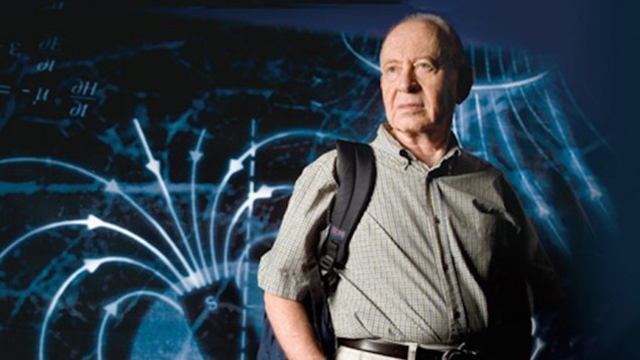Given out since 1978, the Israeli award for academic excellence is an uncanny predictor of future Nobel greatness

Prof. Yoseph Imry, one of this year's Wolf Prize winners (GPO)
Who will win this year’s Nobel Prize in medicine, the sciences, or the arts? No one will know, of course, until the award envelopes are opened later this year, but some of those potential winners – or at least the nominees – were feted at the Knesset Wednesday, as Education Minister Naftali Bennett and Israeli Nobel laureate Professor Dan Shechtman announced the winners of the 2016 Wolf Prizes.
The winners included seven scientists and researchers working in five fields who will share a total prize of $500,000. The prizes themselves will be presented in June at an official ceremony at the Knesset in Jerusalem by President Reuven Rivlin.
The Wolf Prize is presented annually by the Wolf Foundation, founded by Dr. Ricardo Wolf, a German-born inventor and former Cuban ambassador to Israel.
The Wolf Prizes for achievements in the various fields for which it is awarded – agriculture, chemistry, mathematics, medicine, physics and the arts (rotating between architecture, music, painting and sculpture) have turned out to be a good indication of Nobel prognostication. For example, 14 of the 26 winners of the Wolf Prize in physics between 1978 and 2010 have gone on to win the Nobel Prize – five of them in the following year. Schectman, who won the Nobel for chemistry in 2011, followed that pattern, winning a Wolf the year before.
All of the awards were presented to academics doing very advanced work in their fields. The one Israeli winner, for example, is the Weizmann Institute’s Prof. Yoseph Imry, considered the “founding father” of mesoscopic physics – a branch of physics that studies objects that are smaller than macroscopic (visible to the naked eye) objects but bigger than atoms.
Winning the World Prize for agricultural research is Trudy Mackay, from the Department of Biological Sciences at North Carolina State University in the US, who pioneered research in quantitative genetics, which studies the interaction between genes, traits and environmental effects. Among her accomplishments: the development of the Drosophila Genetic Reference Panel, a comprehensive study of small fruit flies to examine, for example, the influence of genes on sleep, and the environment factors that exert their own influence.
This year’s Wolf Prize for the arts will be granted to architect Phyllis Lambert of Canada. Known as “Citizen Lambert – Joan of Architecture,” as a book and documentary about her life called her, Lambert champions traditional, “human oriented” design, and campaigned to save dozens of mansions in her native Montreal from the wrecking ball.
According to Dr. Liat Ben David, CEO of the Wolf Foundation, “The award laureates selected have a significant impact in the fields of scientific research and artistic practice, and are endowed with exceptional talent. Each and every one of them is a beacon of excellence in their field.”
